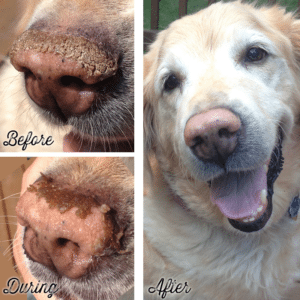Plague a viral disease that is deadly. It is expressed in fever, gastrointestinal dysfunction, respiratory organs, skin lesions and mucous membranes. Often leads to severe forms of encephalitis or meningitis. You can read more for the same now.
The disease is known to dog breeders from the time that dogs were domesticated. Even in the scientific works of Aristotle the dog’s disease was described as a sore throat. On the territory of our country the disease manifested itself for the first time in Crimea, this happened in 1762, which formed the basis for the name Crimean disease. At the beginning of the twentieth century a scientist from confirmed that the disease is viral in nature.

Factors and characteristics of the virus
The causative agent of the disease is a virus that belongs to the extended family of paramyxo viruses. Once in the environment, the plague virus loses its resistance. His activity is lost after a week or more when he is in the stool or mucus of the animals’ nose.
Cooled or withered, the virus can survive a few months. The function is retained for more than a year when the virus is lyophilized. At 100 degrees heat, the virus collapses immediately and only takes half an hour to disintegrate when it is heated to 60 degrees.
Environmental factors and substances for disinfection can quickly deactivate the pathogen: UV rays and 1% solution of Lysol within half an hour, sunlight or formalin solution within two to three hours.
The disease is present all over the world in the form of an epidemic in various animals. Foxes, wolves, bears, raccoons, foxes and weasels are very susceptible to the virus.
The antibodies produced by a person born by the mother’s mother, and who are in milk, can form a passive-type immunity in puppies no more than two weeks old. But this does not happen in all cases. In animals that have successfully transmitted the plague, immunity is fixed for a long time, but does not possess sterility and is not always acquired for the entire period of life.
Fact
Even animals that have been immunized can lose resistance to the cause of the disease, suffer from long-term stress, contact with an animal with an open-ended disease, or immunosuppression. In most cases, dog disease is observed in a generalized form in dogs that have not been vaccinated. This is especially true for puppies 8-16 weeks old if their colostral immunity obtained with maternal colostrum is violated.
Dogs of short-sighted breeds suffer less from discomfort compared to long-running breeds. In its various forms, almost every dog is sick from dog disease, but it usually happens at a young age.
Ways of transfer and infection
The main source of the virus is a plague-sick animal that can be released into the environment by a pathogen. This is determined by the outflow of the eyes, nasal mucus, saliva, excrement and urine, the air that the dog exhales. The pathogen is there for a period of 9-51 days.
The most important factors that determine the transmission of the pathogen between animals is hygiene products and care products that are infected, clothing, blood-sucking insects, birds, food and rodents. In addition, the latter can not only transport the virus mechanically but also release it in the external environment without symptoms of the disease. The reservoir of the virus in nature is homeless dogs or wild animals. The disease can occur in any season, as an epidemic or sporadically.



